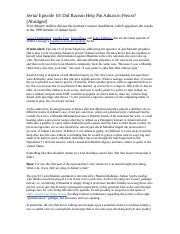

They would raid Portuguese ships as well as going onto the mainland to enslave Africans for the trade. Soon enough, other countries became interested in the profitable slave trade. I want to highlight this because the use of slave labor for plantation agriculture foreshadows the development of slavery in the Americas. Also, at this time, Europeans established sugar plantations on the islands off of Northwest Africa and the slave trade to those islands became profitable. At the end of the 15 th century, about 10% of the population of Lisbon (one of the largest cities in Europe) was African. In addition to trading in Africa, the Portuguese began to export small numbers of slaves to Europe, to work in the cities. As they explored and traded in West Africa, the Portuguese learned that money could be made by transporting slaves along the Atlantic coast to Muslim merchants. The Portuguese went to Africa in 15 th century looking to bypass Muslim North Africans who had a monopoly on the sub-Saharan trade in gold and spices. In order to present the big picture to students, we should compare the slave trade and slavery across the region as a whole. In contrast, only 10% went to the U.S., where slavery was maintained through natural reproduction among the slave population as opposed to the constant supply of new slaves from Africa.

80% of African slaves went to Brazil or to the Caribbean. It’s important to discuss slavery as a historical phenomenon, both inside and outside of the U.S.


 0 kommentar(er)
0 kommentar(er)
